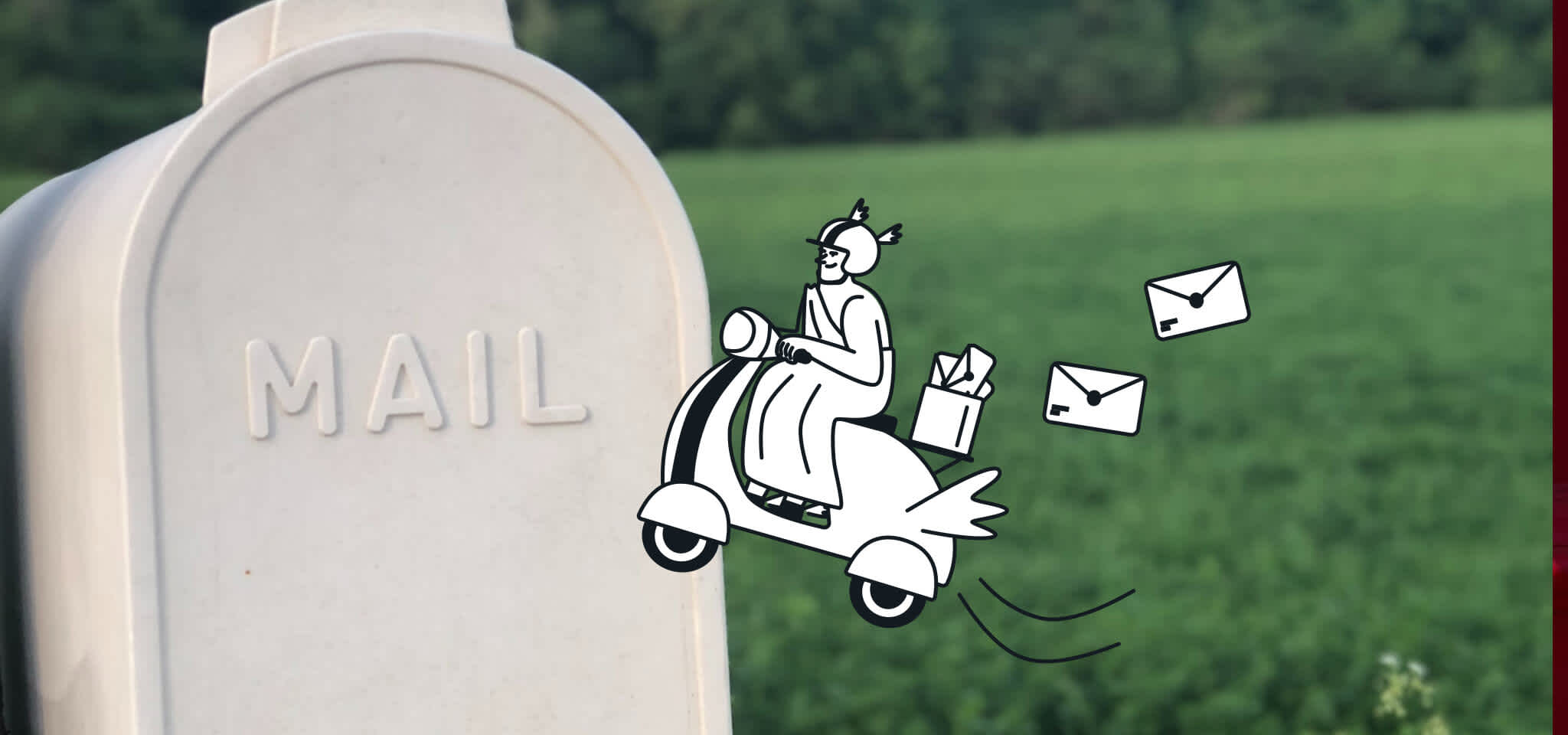Marketing
Green marketing: What it is and what you can do
What does green marketing mean to you? Find out how marketers can go green and change the way they work to be more sustainable. Plus, discover an email industry initiative that could make a huge difference.

PUBLISHED ON
Another Earth Day has come and gone. But with the health and future of our planet in question, it feels much more serious in recent years.
It’s no longer just a feel-good day where we pick up a piece of trash, hug a tree, and kids color pictures of a smiling planet. The crisis our world faces has quickly become very real and undeniable.
You might feel helpless and stuck in a hopeless situation, but you want to do something. We get it. So, is there anything marketers like you can do to help?
The answer is yes. And while you may have some preconceived ideas about green marketing and email’s impact on the environment – we’re here to set the record straight.
Table of content
Digital marketing’s environmental impact
Does email have a carbon footprint?
Big idea: Email expiration dates
Sustainability and email marketing
Sustainability and websites
Sustainability and event marketing
Sustainable digital ads and social media
Use the power of digital marketing for good
What is green marketing?
Green marketing is a term that gets thrown around a lot and used in different ways. So, there are a few ways of looking at the concept:
Green marketing can mean the marketing of environmentally-friendly products and services. In this case, you are actually promoting the sale of something that’s considered sustainable.
Green marketing could mean highlighting a brand’s sustainability efforts for the sake of transparency, awareness, and public relations connected to social responsibility. This could include promoting an organization’s annual sustainability report to show the progress being made.
Green marketing can also mean identifying ways to reduce the environmental impact of marketing efforts. That could include business practices like only using recycled material for direct mail pieces or reducing the energy used to support marketing.
Your green marketing strategy could include all three of the factors above.
The practice of greenwashing is something marketers should certainly avoid. That’s when a brand claims to be sustainable for the sake of profit, attention, or other self-serving interests. But the truth is, they can’t exactly back up those eco-friendly claims.
No matter how you define green marketing, make sure your brand is talking the talk and walking the walk. Getting accused of greenwashing can severely damage a brand’s reputation.
Why green marketing matters
Whether it’s legitimate or misleading, why are so many brands thinking about going green? It’s because research shows people want to purchase from sustainable brands, and many are even willing to pay more.
The 2021 Global Sustainability Report from consulting firm Simon-Kucher and Partners found that 85% of consumers around the world shifted toward “greener” purchasing habits in the last five years. Half of the respondents in that study ranked sustainability as a key value driver and differentiator. Plus, more than one-third said they’re willing to pay a premium for green products.
For further proof that green marketing matters to consumers, consider these stats from Accenture, which in 2019 surveyed people from 11 countries across Europe, Asia, and North America:
83% said it’s important for companies to design sustainable products.
72% said they were purchasing more sustainable products than five years earlier.
81% said they plan to buy even more in the next five years.
When it comes to sustainability, consumers are voting with their wallets, and that’s pushing more brands to go green. Then, it’s up to marketing teams to spread the message.
But an organization’s impact on the environment includes more than its products, packaging, and supply chain practices. Have you ever thought about how what you do as a digital marketer affects the planet?
Digital marketing’s environmental impact
There are some sobering statistics that illustrate how doing things digitally doesn’t always make them environmentally friendly.
In an infographic from ClimateCare.org, the group cites a study indicating that the devices and systems used to support internet usage account for 3.7% of global greenhouse gas emissions. That’s about as much as the entire airline industry.
If the internet were a country, it would produce the 5th most greenhouse gases in the world, trailing only China, the U.S., India, and Russia. That’s according to stats from World Population Review. Unfortunately, it’s only expected to get worse – potentially doubling by 2025.
You see, every time someone conducts a Google search, visits a web page, or sends an email, energy is used and tiny amounts of CO2 are released. Of course, with billions of active internet users, all those tiny emissions add up.
The advertising and marketing industry is starting to take notice and take responsibility. According to the Econsultancy article “2022: A sustainability reckoning for digital marketing and advertising”:
“While ad agencies, digital marketing consultants, and other suppliers of virtual services might have felt that they were exempted from the conversation around sustainability, or felt unable to take concrete action on environmental issues, attention has now turned to the way that digital and virtual services, such as digital advertising and marketing, affect the environment.”
Rebecca Sentance, Deputy Editor, Econsultancy.com
Making a change starts with becoming mindful of the carbon footprint your brand’s digital marketing efforts leave behind.
Email’s role in green marketing
Let’s take a closer look at email marketing and its impact on the planet.
It’s easy to accept the idea that sending emails is better for the environment than sending direct mail. There’s no wasted paper so fewer trees need to be harvested, right? That may be true, but sending marketing emails still requires energy.
Does email have a carbon footprint?
Research has revealed that email does have a carbon footprint. Although, just how large it might be isn’t exactly clear. It depends on who you ask and what factors are considered.
Back in 2009, McAfee reported on the impact of spam email on the environment. It found that a legitimate email typically produces about 4g of CO2. But according to more recent studies, the range goes from as low as 0.3g to as high as 19g for a 1 MB-sized email. Emails with large attachments require even more energy and produce higher emissions.

A lot of the attention around email’s carbon footprint centered on how recipients send messages and manage their personal or work inboxes. Some have suggested people stop sending unnecessary “thank you” emails or unsubscribing from newsletters they don’t read. There’s even an email carbon footprint calculator that estimates an individual’s impact.
However, shouldn’t senders and email marketers share some of the responsibility? Are there ways we can reduce email’s impact on the environment?
Big idea: Email expiration dates
While sending emails is one thing, it’s easy to forget that storing emails also requires energy.
Think about all the old marketing emails out there in subscriber inboxes. Some were read, some led to a conversion, but a lot of them never got opened or even deleted. They just sit there, taking up space and using up energy.
Emails are stored in data centers around the world, and those data centers use a significant amount of electricity. There are stacks and stacks of servers running as well as systems to keep them cool.
What if there were a way to get rid of unnecessary emails automatically? Outdated promotions, unread newsletters, and emails from sales reps would disappear without subscribers needing to do a thing. That’s the idea behind a sustainable proposal in the email industry: the Email Expiration Date initiative.
It’s such a simple idea, it doesn’t need much of an explanation. But let’s do it anyway…
The people behind the Email Expiration Date initiative have thought things through. Here’s how it could work:
Senders decide on the expiration date based on when the email would be obsolete.
Email service providers (ESPs) transmit the data to recipient mailboxes.
Mailbox providers (MBPs) provide the mechanics for deleting the old emails.
Yes, it’s going to require a lot of cooperation and collaboration from everyone in the email delivery chain. But there’s already an excellent start. Check out current supporters (including Sinch Mailjet) and find out more at ZeroCarbon.email.
The more people and businesses that get behind this idea, the greater the impact. As the website states, it’s not the technology that will be difficult.
“The concept, even on a technical level, is not complicated. But adoption must be massive in order to have an impact."
ZeroCarbon.email
How can digital marketers “go green”?
It could be a few years before email expiration dates become a reality. In the meantime, there are practices email marketers can follow right now to make things more sustainable.
As luck would have it, sustainable email marketing is also better for business. That tends to be the case for all sorts of sustainable initiatives. They make companies leaner and more efficient while going green. That’s because a big part of being more sustainable is about reducing waste.
Sustainability and email marketing
There are quite a few opportunities for email marketers to reduce waste and make the channel more sustainable. Here are a few key areas to think about:
Stop batch-and-blasting: Sending the same message to every contact on your list inevitably leads to waste. While there may be instances when you need to send something to all subscribers, strategic segmentation is smarter and more sustainable.
Keep your list clean: Conduct regular list hygiene to remove inactive, unengaged subscribers. Likewise, you should make the process of unsubscribing simple and straightforward. When you avoid sending emails to people who don’t want them (or don’t care) you reduce email marketing waste.
Reduce the weight/file size of emails: Since we know larger emails produce a larger footprint, keeping the size under the control also helps. We’re not saying you should switch to plain text emails only. However, email marketers can:
Minify CSS and HTML to remove unnecessary code.
Compress image files to keep them under 200kb.
Keep copywriting concise and to the point.
Just to clarify, the “weight” of a marketing email only relates to the HTML file size, which is typically under 100kb. Images are usually uploaded separately and linked to from the HTML file. But they are still taking up space on a server somewhere.
Another way to reduce email marketing waste is to avoid the so-called “oops email.” That means having an established quality assurance (QA) process. You can use email previews in Mailjet and our collaboration features to get help catching mistakes before they’re sent.
Sustainability and websites
Just like emails, websites leave a carbon footprint too. Every time someone visits a page, a little bit of energy is used. Wired reports that the average website produces 1.76g of CO2 for every pageview. Think about how fast a site that gets hundreds of thousands of visits a month racks up emissions.
Web hosting service, Kinsta, recommends these steps for greener web design and development:
Write clean and efficient code.
Use vector graphics and CSS animations instead of larger image files like JPEGs and GIFs.
Upload images at the exact size rather than using CSS to adjust.
Use an environmentally-friendly CDN (content delivery network) partner for large media.
Avoid videos that autoplay.
Sunset support for older web browsers.
Minimize the use of custom fonts and use web fonts instead.
Implement a caching solution.
If there are outdated pages that add no value, consider cleaning things up. It’s better for the environment and creates a better user experience.
Of course, every website is different. If you want to evaluate your website’s carbon footprint and benchmark it for improvements, check out the online tool WebsiteCarbon.com.
Sustainability and event marketing
During the pandemic, a lot of events such as conferences and conventions went virtual. Now studies show that online events could be a good thing for the environment.
A recent study published in Nature Communications estimates that the annual carbon footprint of the global events industry is equivalent to that of the United States. That would mean events are responsible for around 10% of global emissions. However, the authors also believe switching to virtual events could be an effective climate change mitigation strategy.
“We find that transitioning from in-person to virtual conferencing can substantially reduce the carbon footprint by 94% and energy use by 90%.”
In-person events don’t have to become a thing of the past, but you should be aware that global events do impact the environment. Holding more virtual events would be a smart green marketing initiative. A good compromise could be a hybrid event, which has both onsite and virtual attendees.
Sustainable digital ads and social media
Using social media and paid digital ads to promote your company also has an environmental impact. When examined on an individual level, the carbon footprint of social media doesn’t seem huge. But when you add up all the people using these platforms, and all the time being spent, it quickly becomes significant.
For example, according to Greenspector, the average social media user generates the same amount of emissions per year as a car that drives 332 miles. Now multiply that by more than 4.5 billion users.
The UK-based company Good-Loop estimates the typical online ad campaign generates 5.4 tons of carbon dioxide, which is more than the typical UK resident generates in a year. Reducing the file size of digital ads can help, but Good-Loop’s COO says that isn’t the only issue:
“Because of the rise of programmatic advertising, we not only need to factor in the carbon dioxide used to transfer the ad onto the page and display the ad to the user, but also the trillions of auctions that take place every day without any ads being served at all.”
Ryan Cochrane, Good-Loop COO
To find out more about your brand’s digital advertising, check out Good-Loop’s ad carbon calculator. The group AdGreen also offers a carbon calculator tool.
Green marketing is smart marketing. The better targeted your ads are, the less energy gets wasted on the wrong audience. If you’re using a social media platform that’s not getting any engagement or isn’t relevant to your target audience, maybe it’s time to call it quits.
Use the power of digital marketing for good
Whether you are an email marketer, a content creator, or a social media specialist, we can use digital platforms to encourage people to live more sustainably.
Are there causes or events you can promote and support? Does your company offer eco-friendly products? Can your products be used in a way that reduces energy use? Could you encourage customers to reuse or recycle product packaging?
As a digital marketer, you have the tools and the knowledge to persuade people to take action. That means you have the power to promote positive changes and to share information that opens people’s eyes to the reality of climate change and their personal impact on the planet.
In a noisy world that’s full of distractions, digital marketers are experts at grabbing the attention of the masses. Let’s use green marketing to make a difference and shed some light on important issues surrounding sustainability.
How Mailjet supports greener email marketing
Mailjet, Mailgun, and Email on Acid are proud to join our parent company, Sinch, in supporting the Email Expiration Date initiative. We also strive to consider sustainability and energy efficiency when making choices about our infrastructure and technology partners.
We believe every company and every individual needs to do their part to help solve the issue of climate change and make our planet a greener place.
Whether you do it through more efficient email marketing practices, or by promoting sustainability through email, Mailjet supports you too. The impact one person or one brand can have may seem small, but real change calls for participation from everyone.
Remember, our planet got into this mess because of how seemingly small human actions add up. The only way to get out of it is to start making better choices – because it will add up.

Kasey Steinbrinck
Sr. Content Marketing Manager at Sinch Email on Acid and Sinch Mailgun

Thomas Hajdukowicz
Content & Localization Specialist at Sinch Mailjet







